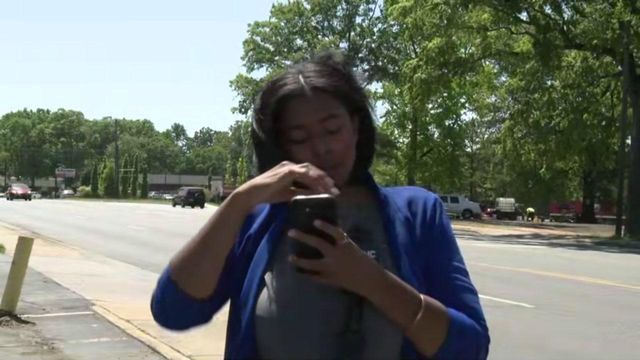What’s a Pulse Oximeter, and Do I Really Need One at Home?

After working for 10 days at Bellevue Hospital in New York, Dr. Richard Levitan decided to share what he had learned about COVID-19. Too many patients were showing up at the hospital with perilously low oxygen levels, putting them at risk for severe complications and death.
But a simple home gadget called a pulse oximeter could help alert patients to seek help sooner, he said.
“In the hospital, when I’m trying to decide who I send home, a big part of the criteria is: ‘What is your oxygen? What is your pulse?’” said Levitan from his home in New Hampshire, where he just finished self-quarantine as a precaution. “With a pulse oximeter and a thermometer, Americans can be prepared and be diagnosed and treated before they get really, really sick.”
Health officials are divided on whether home monitoring with a pulse oximeter should be recommended on a widespread basis during COVID-19. Studies of reliability show mixed results, and there’s little guidance on how to choose one. But many doctors are advising patients to get one, making it the go-to gadget of the pandemic. We’ve answered common questions about the device, how it works and what to do with the information it gives you.
Q: What is a pulse oximeter?
A: A pulse oximeter is a small device that looks sort of like a big clothes pin. You place your finger snugly inside (most require nail side up), and within seconds it lights up with numbers indicating your blood oxygen level and heart rate. Most healthy people will get an oxygen reading around 95% to 98%. Some people with existing health conditions may have a lower normal reading. You should check in with your doctor if the number falls to 92% or lower.
The device will also show your heart rate. A normal resting heart rate for adults ranges from about 60 to 100 beats per minute, although athletes with a higher cardiovascular fitness will have a lower pulse.
Q: How does a pulse oximeter work?
A: When you insert your finger into a pulse oximeter, it beams different wavelengths of light through your finger (you won’t feel a thing). It’s targeting hemoglobin, a protein molecule in your blood that carries oxygen. Hemoglobin absorbs different amounts and wavelengths of light depending on the level of oxygen it’s carrying. Your pulse oximeter will give you a numerical reading — a percentage that indicates the level of oxygen saturation in your blood. If you’ve been to a doctor in the past 20 years, you’ve experienced pulse oximetry.
The device works better with warmer hands than cold hands. And because oxygen levels can fluctuate, consider taking measurements a few times a day. Also try it in different positions, such as while lying down or walking. Keep notes.
Q: Does it matter what finger I use?
A: Most health technicians will place the device on the index fingers, but a study of 37 volunteers found that the highest reading came from the third finger on the dominant hand. A close second was the dominant thumb. So if you are right-handed, use the right middle finger. If you are left-handed, use the left middle finger. The difference between fingers is small, so if you prefer the index finger, that’s fine.
Q: Do long nails or nail polish make a difference?
A: Yes. Dark nail polish can affect the accuracy of a reading. Very long nails would make it difficult to insert your finger properly into the clip.
Q: What happens if my oxygen level falls? What is the treatment?
A: If your number dips to 92% or lower, you should check in with your doctor. But don’t panic.
The good news is that it’s a lot easier to bolster an oxygen level that is just starting to drop than one that is dangerously low. When Dr. Anna Marie Chang, an emergency room physician in Philadelphia, tested positive for the coronavirus in mid-March, she felt lousy but was reassured by daily checks that showed normal oxygen levels. Chang, an associate professor of emergency medicine and director of clinical research for Thomas Jefferson University, even started feeling better but kept up her daily monitoring with her pulse oximeter. One morning she felt severely fatigued and saw that her oxygen level had dropped to 88%.
“I texted my colleagues and said, ‘I think it’s time to go in,’” she said. Once admitted, she was placed on oxygen with a mask. She spent her days resting in the prone position (on her stomach) because the position opens up the lungs and is more comfortable. “I was there for four days and never needed to be intubated,” Chang said. “It was just supplemental oxygen.”
Levitan noted that patients with COVID-19 can experience a potentially dangerous drop in oxygen saturation without having obvious breathing problems. Without a pulse oximeter, they might never know it or get very used to how they feel, despite very low oxygen levels. By the time they go to the hospital feeling shortness of breath, their oxygen levels would have dropped significantly, and they could have very advanced COVID pneumonia.
“They are still talking, thinking clearly, and not in obvious distress,” Levitan said. “If the level of oxygen became this low all of sudden, these patients would be unconscious, having seizures, or otherwise affected. What that means to me is there is a period of days where they were going silently down and they didn’t know it.” Q: Is there a risk to monitoring oxygen levels at home?
A: It’s possible that a home monitor could give a faulty reading or be used incorrectly, prompting a patient to seek care unnecessarily. If you or someone in your home shows a very low reading, you may want to test your device on a healthy person to confirm that it is working correctly and discuss it with your doctor.
And home monitoring should not give you a false sense of security. Don’t ignore physical symptoms even if your oxygen level is fine. You should still call a doctor if you have severe shortness of breath, a high fever, confusion or any other concerning symptom. The benefit of monitoring is that it potentially can flag a decline in your respiratory health before you feel it. And if you feel really lousy — as many COVID patients do for a few weeks — seeing a normal oxygen level can relieve some of the stress of the illness.
Q: Are home devices accurate? Which one should I buy?
A: When Chang needed a home monitor, she called friends and told them to pick one up from Target. “I literally said to my friend, ‘Just find me one,’” Chang said. “It’s fairly straightforward technology.”
The research data on home monitors has been mixed, but they tend to be accurate within a few percentage points. In drugstores you can find monitors in the $20 to $50 range, while some sell online for $200 or more. Paying a higher price doesn’t guarantee a better monitor.
Wirecutter, a New York Times company that reviews and recommends products, suggests starting with the Food and Drug Administration’s 510(k) Premarket Notification Database and searching for “oximeter.”
Given that pulse oximeters are in high demand, you may not find a model listed in the FDA database right now and will have to settle for what you can find. One way to check how it’s performing is to take your pulse manually and compare the result to the rate shown on the device. Remember, when you use a monitor, it’s the trend that matters, not a single reading.
“Consumer models are very reliable,” Levitan said. Experts advise sticking with the finger clip technology for now. Newer wearable devices and camera-based apps use a different technology to measure oxygen saturation, and so far most of these products appear to be unreliable. A 2019 study in the American Journal of Emergency Medicine tested three iPhone apps that offered pulse oximetry function, but they all fell dangerously short of the mark. The apps were “inaccurate” and “had limited to no ability to accurately detect hypoxia,” the authors concluded.
If you can’t find a pulse oximeter right away, you can probably find one that can be delivered in a few weeks or month. If you get sick and don’t have a home pulse oximeter, don’t panic. Most people do fine without them. You also can also borrow one from a friend (they are easily sanitized) or talk to your doctor about getting your oxygen levels checked at an urgent care center.









